Are you looking to measure how satisfied your customers are with your product or service? If so, the Net Promoter Score might be the perfect metric for you to track.
Composed of a simple rating-scale question, this highly popular method allows you to reduce churn, predict growth, and earn long-lasting loyalty:
With the right survey tool, NPS is extremely easy to run and analyze, and it can be displayed on any channel you use.
But how do you get started? Read our guide to find out what's the meaning of NPS, how to run and interpret your NPS and avoid the most common mistakes that might hinder your results.
What is Net Promoter Score (NPS)?
The NPS acronym stands for Net Promoter Score. It's a customer loyalty metric developed by Fred Reichheld, a partner at Bain & Company, in 2003 to help companies earn customer loyalty and inspire employees. Working with data provided by Satmetrix, Reichheld and his team tested a variety of questions to find out how well the answers correlated with customer behavior. They wanted to identify the best question to help predict customer lifetime value.
In the end, they discovered that the following question hit the mark:
“How likely is it that you would recommend this company to a friend or colleague?”
To answer the questions, customers need to select a score on a scale from 0 to 10. The responses are divided into three groups:
- Promoters (score 9-10)
These are customers who are highly satisfied with your product/service and are likely to recommend it to others. They’re most likely to stay loyal to your company, and your efforts as a business should be focused on making sure you grow your pool of Promoters.
- Passives (score 7-8)
These are customers who are satisfied with your product/service but are not enthusiastic enough to recommend it to others. Even if they buy from you regularly, they might switch to a competitor if they get a better deal.
- Detractors (score 0-6):
Detractors are customers who are unhappy with your product/service. They’re likely to discourage others from using it or damage your brand with negative word of mouth.

Even though the NPS is used by many businesses to gauge customer satisfaction, it differs from other customer experience benchmarks, such as the Customer Satisfaction Score (CSAT). By measuring a relational NPS - the general customer sentiment about your brand and not just an opinion on a particular aspect of it, such as recent purchases or interactions.
CSAT, on the other hand, can be measured with the survey template below:
Why is Net Promoter Score important?
Net Promoter Score is more than a metric—it’s a way of doing business. It can inspire your company to adopt a customer-centric culture to guide the entire way you do business.
However, for it to work, you have to collect NPS regularly, not just as a one-off.
The insight gathered through NPS can help you determine which aspects of your business customers are most satisfied with and what needs improvement to increase customer loyalty.
At the same time, it’s very simple and easy to use. With only two questions, you won’t be placing burdensome time demands on your customers, and the results are easy to calculate, too.
By measuring NPS regularly, you can achieve the following goals:
- Decrease churn
NPS provides you with specific and actionable data that you can use to reduce churn. By identifying unsatisfied customers early on and following up with them, you might be able to fix the issue before they cancel their subscriptions or share negative reviews online.
- Track your results
By running regular NPS surveys, you can track your results from week to week and month to month, just like you follow other metrics such as organic traffic or net profit.
Your Net Promoter Scores can also be broken down into different categories to help you zoom in on them, for instance, a particular store, a business line, a product, and even an individual customer support rep.
- Predict growth
Even though the final score is not a guarantee that customers will indeed recommend your business or stay loyal to it, it nevertheless strictly correlates with growth.
- Segment your customers
You can segment your customers based on their rating as Promoters, Detractors, and Passives to create and target future marketing campaigns better.
How to calculate NPS
Calculating your Net Promoter Score can seem complex, but it's actually relatively simple.
You start by asking customers the classic NPS question:
“How likely is it that you would recommend this company to a friend or colleague?”
This will give you a score from 0 to 10. Separate your responses into three categories: Detractors, Passives, and Promoters. Detractors are customers who responded with 0-6, Passives with 7-8, and Promoters with 9-10.
Work out the percentage of total respondents in each category.
Finally, calculate your NPS score by subtracting the Detractors’ percentage from the Promoters’ percentage. Voila! You now have an accurate representation of how your customers feel about your product or service.

📌 Tip: It's a common misperception that Passives don't affect the NPS result. However, since your overall score is calculated using the total percentages for each category of respondents, and the Passives influence the total number of results, they do have an impact.
Even though the formula is simple, you don’t have to work out your scores manually.
Survicate automatically calculates your NPS after a new response comes in. In the dashboard, you'll see the percentage of votes for each answer and the number of responses for all three respondent groups.

We also have a free NPS calculator to help you easily work out your score. Simply enter the number of responses for each category into the relevant fields and get a score.
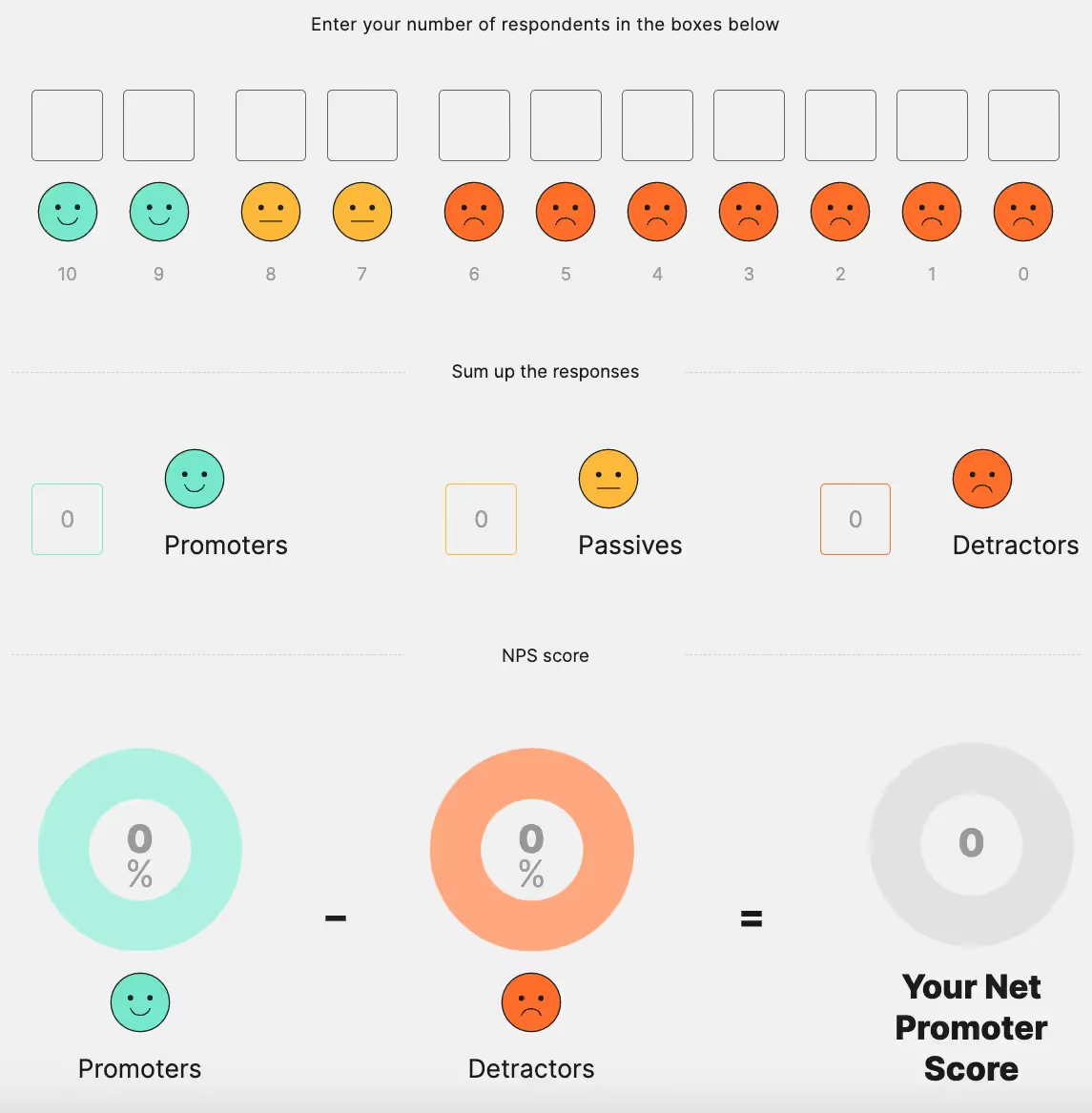
How to interpret your NPS
Your NPS is expressed as a score from -100 to 100. A positive score means you have more Promoters than Detractors; a negative score means the opposite.
Ideally, you should always aim for an above-zero score, as this suggests that you have more Promoters. If your score ever dips below 0, that’s a clear sign you need to take immediate action.
The first rating NPS question is usually followed by open-ended questions that provide more context to NPS scores. You can use Survicate’s NPS survey template to get a complete, ready-to-send set.
Before analyzing the results, ensure you have collected enough data. If you struggle to get the right sample size, supplement your Net Promoter Score with Customer Effort Score (CES) and Customer Satisfaction Score (CSAT) text answers.
You can use Survicate’s five-point-scale CSAT survey template for free:
In general, there are many angles from which to view your NPS results. You can, for instance, compare your score to industry benchmarks to see how to stack up against your competitors.
It’s also a good idea to track your performance by comparing your own NPS scores over time.
📌Tip: If you’d like to know why a respondent selected a particular number on the rating scale, you can use Survicate’s survey logic. It allows you to ask follow-up questions that are triggered by a specific answer.
To diver deeper into your score and max out its value, use this free NPS template with follow-up questions:
What is a good NPS score?
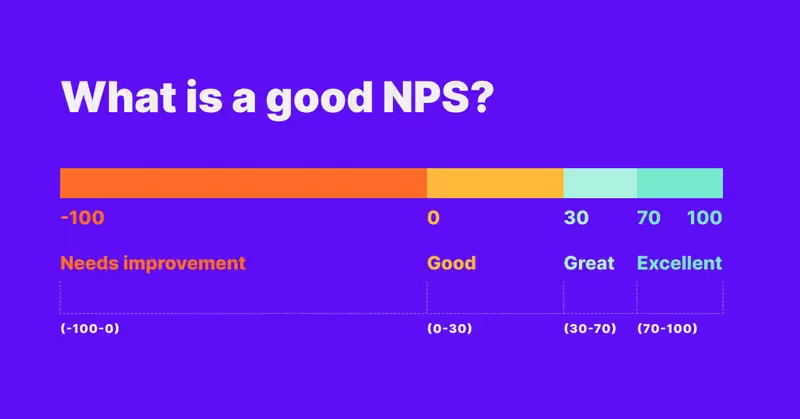
Generally speaking, any score above 0 is positive, as it means you have more loyal customers than dissatisfied ones.
- Below 0: You need to take immediate action to resolve challenges that are putting your customer satisfaction at risk.
- 0–30: You have some satisfied customers but not enough Promoters.
- 30–69: Although you do have a lot of Promoters, there is more you can do to convert Passives.
- 70–100: Congratulations! Your customers are happy with your business, and you can expect growth in the future.
However, remember that NPS averages vary depending on your industry, size, and lifecycle. It’s always a good idea to benchmark your score against your competitors or industry standards.
Common mistakes to avoid when calculating your NPS
NPS can be an extremely helpful metric, but you need to be aware of these common mistakes before you send out your survey.
Changing the wording of the NPS question
The question is simple, and it doesn’t need any clarification. Changing the wording can lead to different results, so stick to the original structure.
Asking at the wrong time
Make sure your customers have had the chance to use the product or service in question before you ask them about their experience. At the same time, don’t wait too long, or else they might forget what the experience was like.
Running the survey once
To get a true picture of your NPS score, you need to be consistent about the way you run the survey. Experiment with running it at different touchpoints across your user journey, at different times of the day, and through different channels. If you don’t get a satisfactory number of answers the first time, don’t worry: there are many proven ways to boost your survey response rate.
Sending too many surveys
Pestering your customers with an NPS survey with the hope of getting a better response rate or a higher score is a no-no. Nothing will put them off your brand more than incessant demands on their time.
Not analyzing the results
Collecting the score is just one part of the process. What’s equally important is being able to analyze it and share it across your company so that it can be acted upon.

Send your NPS survey today
NPS is one of the easiest and quickest ways to maintain consistent business growth and keep customer satisfaction high.
Did you know that you can send it out to your customers for free? With Survicate’s 10-day free trial, you get access to a wide range of native integrations with your favorite third-party tools, including HubSpot, Slack, Intercom, and Smartlook, which means you’ll be able to configure automatic workflows to react to feedback faster.
Unlike other survey tools, Survicate allows you to embed the first NPS question into the email preview, significantly boosting the response rate. It will also help you ensure accurate results by counting responses even from partially answered surveys.
Sign up for free to send your first NPS survey and start collecting customer insights today.









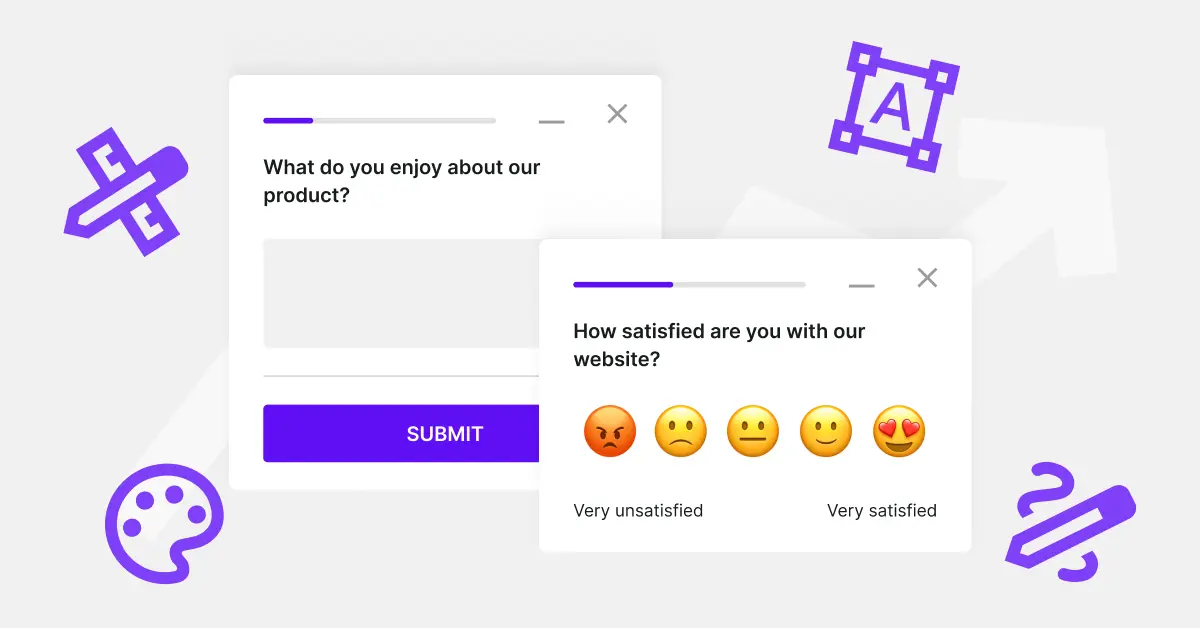
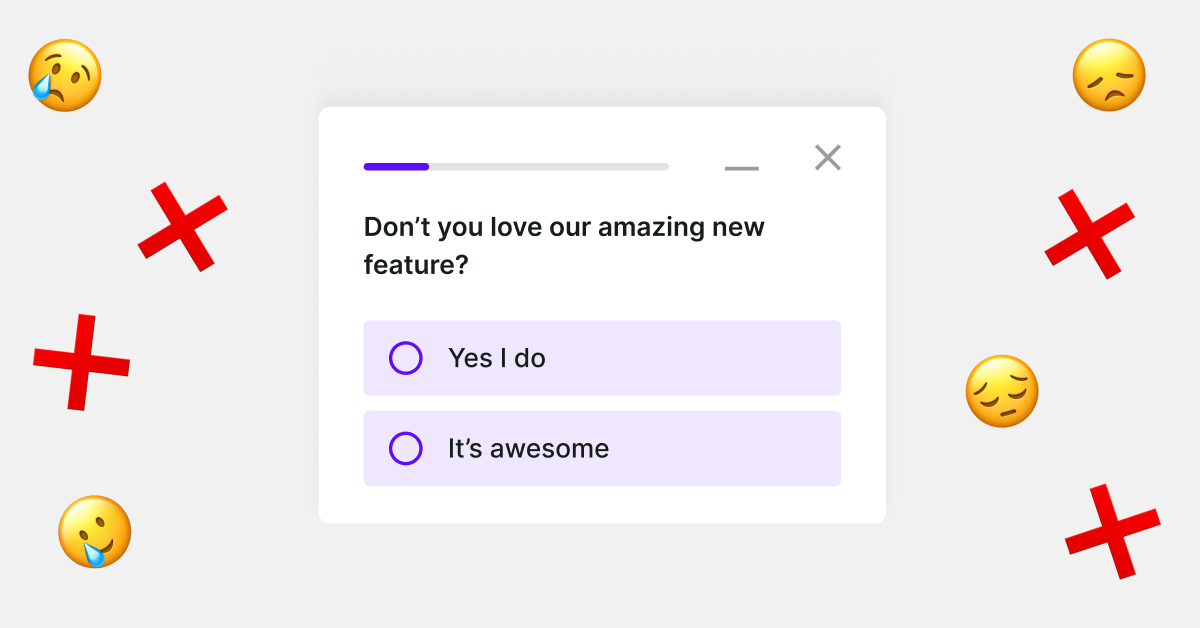
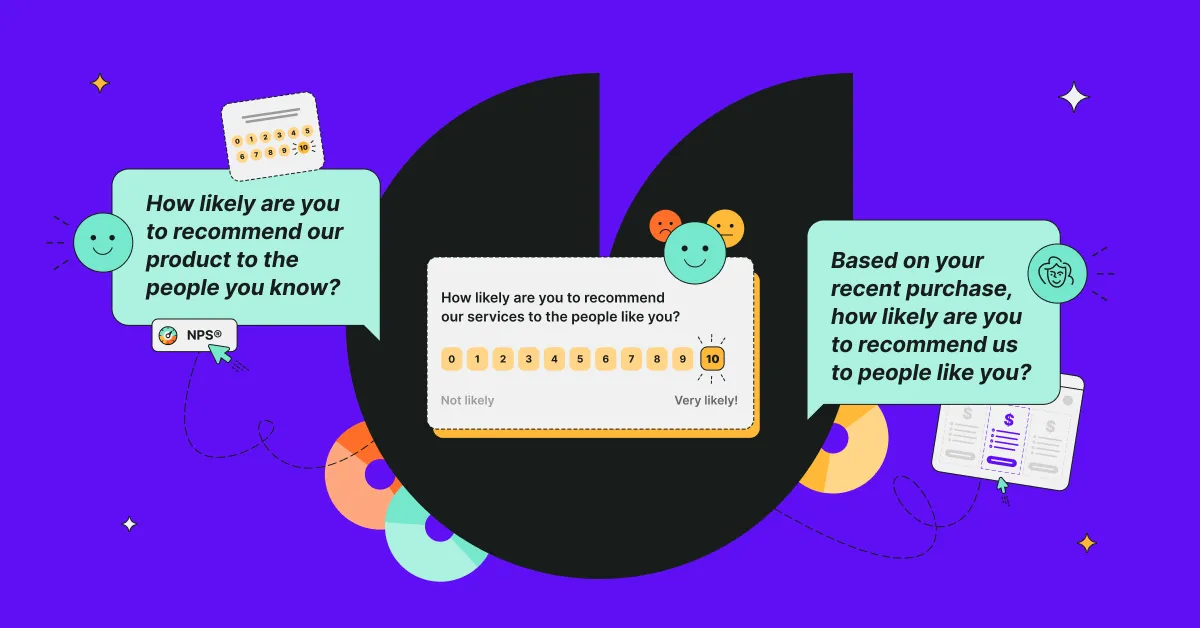
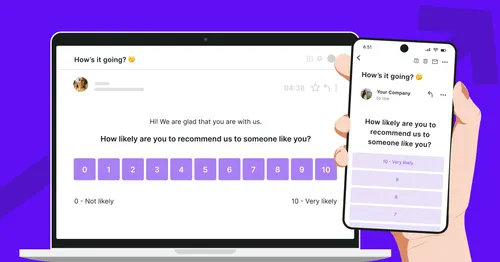
.svg)

.svg)



